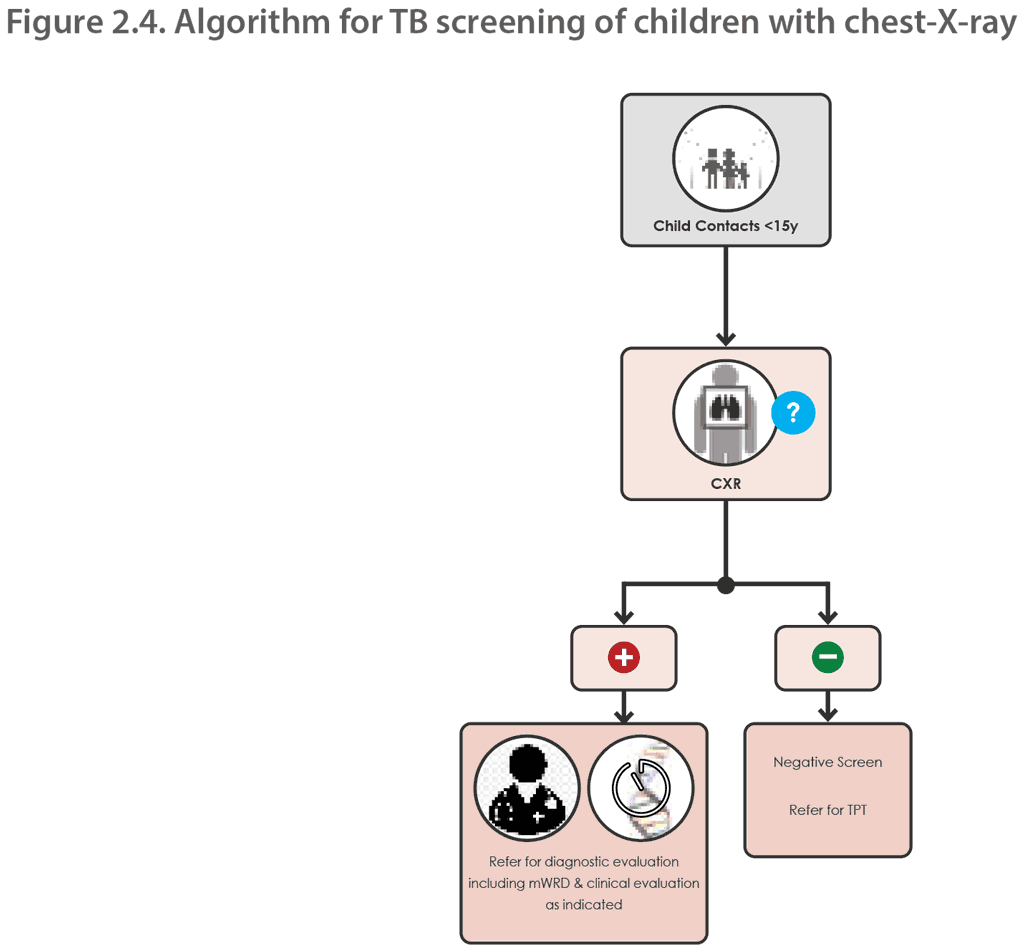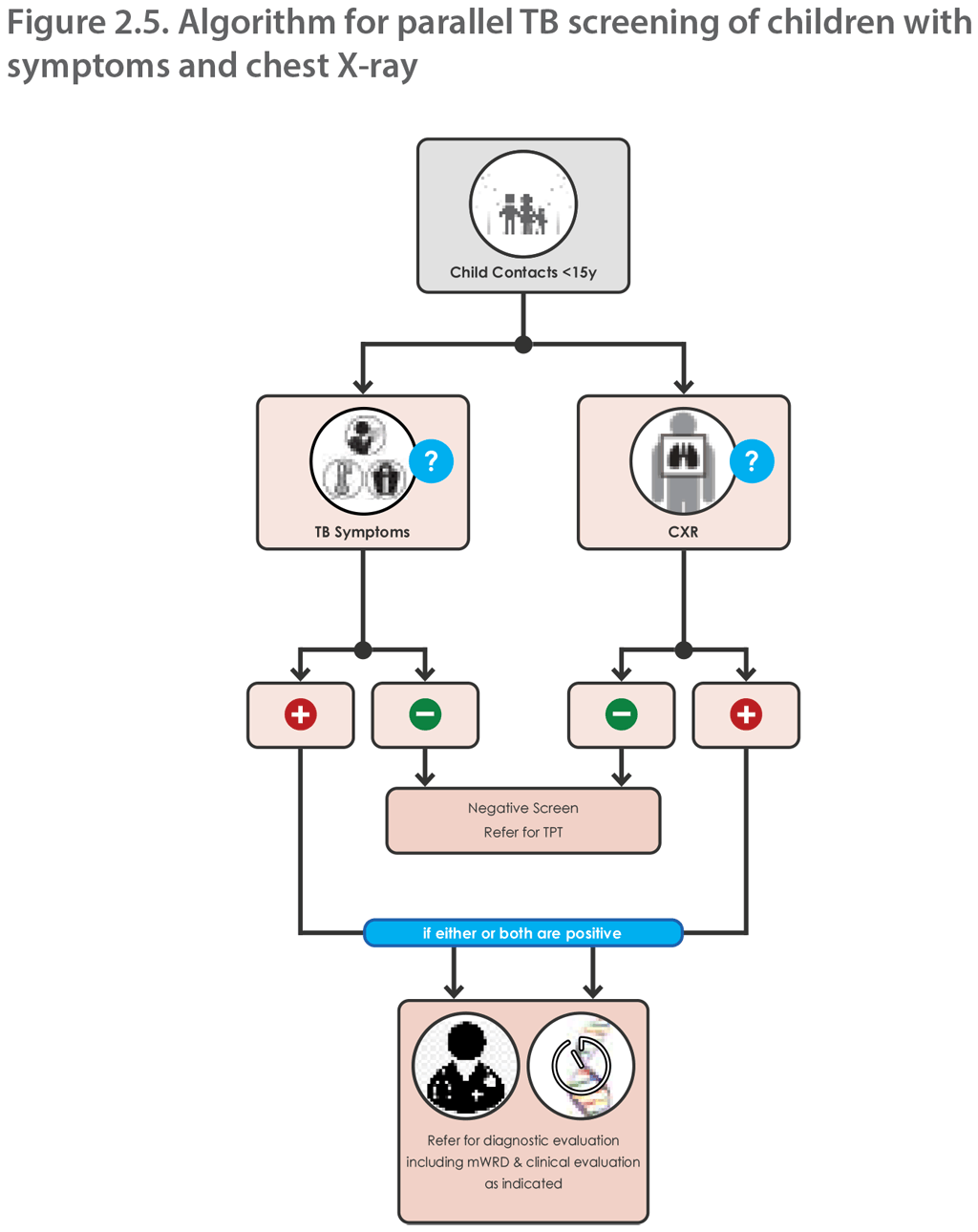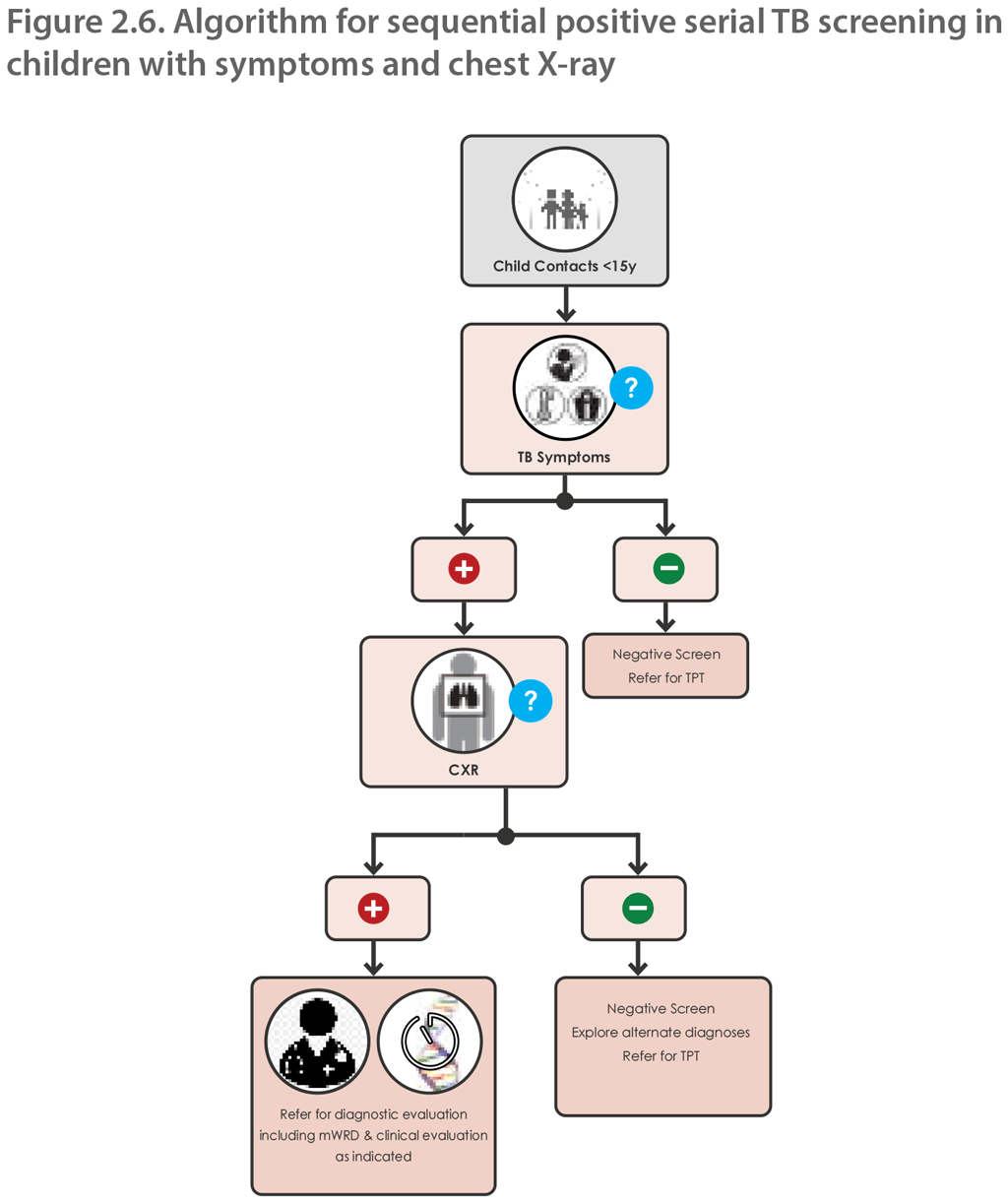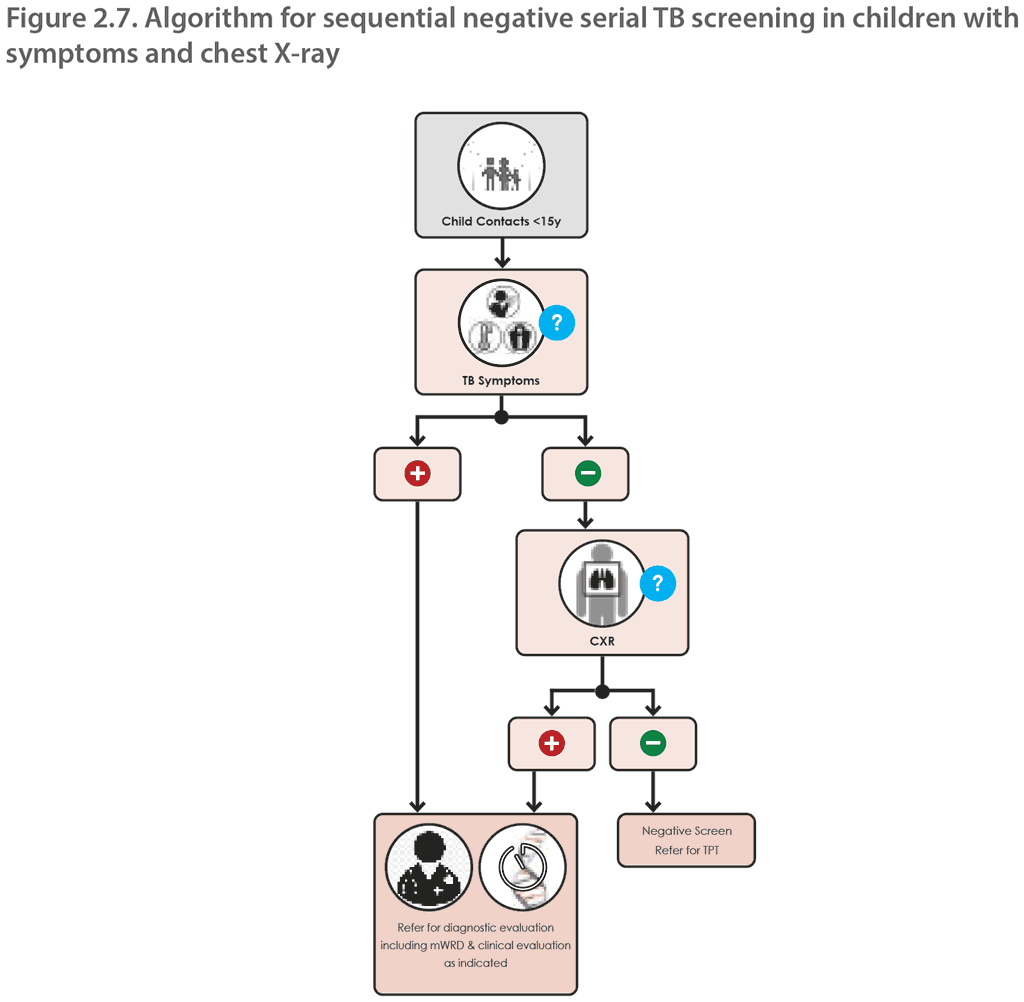Links de passagem do livro para 2.3.1.2. Chest X-ray
Sensitivity for TB of “any abnormality” as reported on CXR in close contacts aged under 15 years is 84%, and specificity is 91% (25). It is thus more specific than symptom screening alone. Estimates of the accuracy of CXR are not disaggregated by age group, and significant differences in CXR findings between younger and older children may lead to important differences in sensitivity and specificity by age group.
Abnormalities caused by TB seen on CXR in children may differ widely from those in adults. Older children may have adult-type disease presentation, such as lung cavities, but changes on CXR associated with TB disease in younger children may be subtle and hard to see if the quality is not optimal. When using CXR for TB screening in children, ideally both posteroanterior and lateral views should be done. Common abnormalities in children include enlarged hilar and paratracheal lymph nodes, sometimes with evidence of lymph nodes compressing the airways, alveolar consolidation without visible cavities, miliary lesions (as a sign of disseminated disease) and pleural effusions. It may be difficult to distinguish abnormally enlarged paratracheal and hilar lymph nodes from normal vascular structures. These subtle findings on CXR in younger children may affect the sensitivity and specificity of CXR. The assistance of a practitioner experienced in interpreting paediatric CXR may be sought to resolve questions about interpretation. Computer-aided detection software for interpreting CXR for TB is recommended by WHO as an alternative to human reading (see Chapter 4 in the WHO operational handbook on tuberculosis. Module 2: screening – systematic screening for tuberculosis disease (13)). This recommendation is currently limited to people aged 15 years and older, and more data should be collected to validate the performance of computer-aided detection software for TB in children.
CXR can be used in combination with symptom screening to screen for TB disease. CXR is not readily available in many locations, and travel to another location for CXR may not be feasible for caregivers, who may be unable to make time or to afford direct or indirect costs for travel, time, support or radiography services. Mobile CXR units may be used to reach populations with poor access, but these require training and financial and logistical support.
Newer digital X-ray machines emit a small amount of radiation, but the radiation risk to the patient is very low. Chapter 3 in the WHO operational handbook on tuberculosis. Module 2: screening – systematic screening for tuberculosis disease (13) outlines additional considerations for implementing CXR, including the benefits and drawbacks of serial and parallel screening when combined with symptom screening.
Figures 2.4–2.7 provide algorithms for TB screening in children and young adolescents, using CXR, symptoms and CXR, sequential positive and negative serial TB screening with symptoms and chest X-ray, respectively.




 Opinião
Opinião